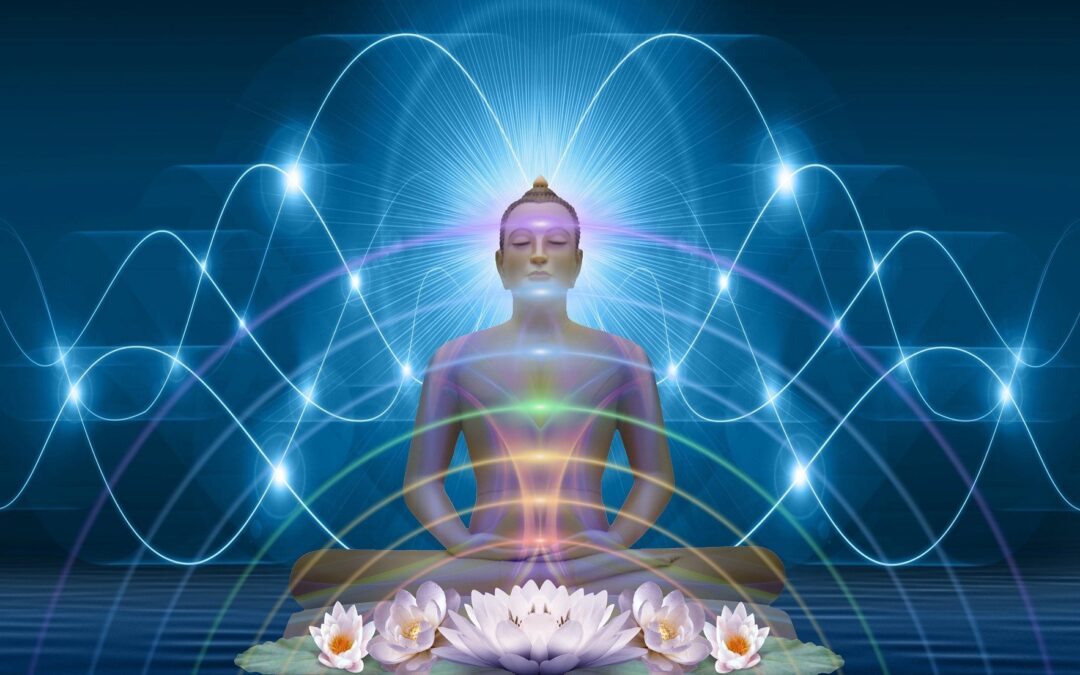(p.7 Ayurveda and Aromatherapy by Drs. Light and Brian Miller)
For example: Your purpose is peaceful, yet if your thoughts are fearful and your emotions negative, your physical body will manifest some dis-ease as a “wake-up call to change”. In Ayurveda, the manifestation of a disease is considered to be a good sign, because it reveals a previously hidden aspect of yourself – an aspect to be healed. Health is harmony within all aspects of self. This inner harmony also becomes manifest as harmony with family, friends, co-workers, society and Nature.
According to Dr. Light Miller, “The overall goal of Ayurveda is true freedom from death and disease; we are to experience the enjoyment of uninterrupted physical, mental and spiritual happiness and fulfillment. Enjoyment is one of life’s purposes! But you can lose your ability to enjoy if you over-indulge, and disease is one of Nature’s ways of saying you’ve over-indulged.”
- The fulfillment of your duties to society
- The accumulation of possessions while fulfilling duties
- Satisfying legitimate desires with the assistance of one’s possessions
- The realization that there is more to life than duties, possessions and desires
The ancient Vedic word for immunity means, “forgiveness of disease” – this comes from the concept that negative thoughts and lifestyles can cause disease.
Although today’s scientists may not describe the Immune System in this way, they do acknowledge that the Immune System plays a key role in every aspect of our health and wellness. And it can be weakened by physical, emotional, mental and environmental “toxins” and overload. Is this another way of saying, “a mind-body-spirit disconnect”?
- The Five Element Theory
- The Three Doshas
- The Six Tastes of Life
- The Three States of Mind
- The Seven Major Chakras
While each of these is a whole course in itself, we shall briefly define/describe what each of these is about.
- Earth – represents the solid state of matter; it manifests stability, fixity and rigidity; Earth is considered a stable substance
- Water – represents change and movement; fluidity;Water is considered substance without stability
- Fire represents the power to transform solids to liquids, to gas, and back again; Fire is considered form without substance
- Air – is the gaseous form of matter which is mobile and dynamic;
Air is considered existence without form - Ether – is the space in which everything happens; it is only the distances which separate matter
- Vata is a combination of Ether and Air and manifests as movement
- Pitta is a combination of Fire and Water and manifests as transformation
- Kapha is a combination of Water and Earth and manifests as structure and lubrication
- Sweet is made from Earth and Water;
Sweet will increase Kapha but decrease Pitta + Vata - Sour is made from Earth and Fire
Sour will increase Pitta and Kapha but decrease Vata - Salty is made from Water and Fire
Salty will increase Pitta and Kapha but decrease Vata - Pungent is made from Fire and Air
Pungent will increase Pitta and Vata but decrease Kapha - Bitter is made from Air and Ether
Bitter increases Vata but decreases Pitta and Kapha - Astringent is made from Air and Earth
- Astringent will increase Vata but decrease Pitta and Kapha
- Tamas – a place of darkness and dullness; can drive one to addiction, suicide, perversion, hate and insensitivity
- Rajas – a place of action; being caught up in the illusion of the world and pursuit of desires; can drive one to hyperactivity, irritation, manipulation, greed
- Sattva – the highest state; it is where we are meant to play and live; can start projects, ability to make positive changes, good communication, calm, stable
The Seven Major Chakras are considered vortexes of Universal Energy that have physical, emotional, mental and spiritual influences. They exist outside the body and have points of connection with the body through which energy flows. Most meditations refer to Chakras in order to help with grounding and connecting to a Higher Source.
- Root Chakra – at the base of the spine; security, trust, safety, foundational
- Sacral Chakra – just below the navel; creativity, procreation, vitality, joy
- Solar Plexus – at stomach level; our will, sense of self, presence in the world
- Heart Chakra – on breastbone at mid-chest; love, connection, compassion
- Throat Chakra – on throat; speak your truth, communication, expression
- Third-Eye – middle of forehead, just above brows; intuition, higher knowing
- Crown Chakra – top of head; connection to Spirit/Divine; all-knowing
Each chakra has a colour, sound, aroma, crystal and shape assigned to it. They are described as balanced, imbalanced, open, closed. There are positive and impoverished emotional charges to them.
By now, you likely have a sense that working with Ayurvedic Medicine is incredibly detailed – and you would be correct! This is also where the concept of “Holistic” began. It was, and still is, the driving force behind everything in Ayurveda. With today’s fast-paced, confusing and worrisome world, it is a very different way of looking at ourselves, our healing and well-being. Strengthening the Mind~Body~Spirit in a holistic manner, may be what the world needs now.

